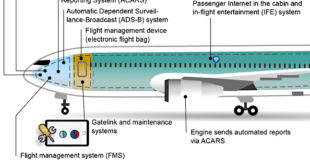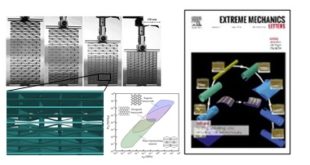Military trainer aircraft play an essential role in preparing pilots for the complex demands of modern air combat and operations. Designed to simulate real-world flying conditions while offering an adaptable learning environment, trainer aircraft provide the foundational skills and experience pilots need before transitioning to more advanced military platforms like fighter jets, transport planes, or helicopters. In this article, we’ll explore the different types of military trainer aircraft, their key features, and the technologies that are advancing this critical area of military aviation.
A trainer is a class of aircraft designed specifically to facilitate flight training of pilots and aircrews. The use of a dedicated trainer aircraft with additional safety features—such as tandem flight controls, forgiving flight characteristics and a simplified cockpit arrangement—allows pilots-in-training to safely advance their real-time piloting, navigation and warfighting skills without the danger of overextending their abilities alone in a fully featured aircraft.
Pilot training encompasses two primary areas: flight training and operational training. Flight training focuses on developing the candidate’s flying skills, while operational training teaches how to apply those skills in simulated combat scenarios. Typically, civilian pilots begin their training in light aircraft designed to accommodate both student and instructor, using either a side-by-side or tandem seating configuration. Side-by-side seating allows for more direct interaction and real-time correction, while tandem seating better simulates the cockpit environment of fast jet pilots. Historically, both configurations have been used, with tandem seating prevalent in basic trainers and side-by-side used in operational conversion for some military jets.
In modern training programs, military pilots often start in light aircraft similar to those used in civilian training. This initial phase serves as a screening process for mental and physical attributes, utilizing aircraft like the Slingsby Firefly and the Scottish Aviation Bulldog. Following this, candidates may progress to basic trainers, which are typically turboprop aircraft capable of mimicking jet handling characteristics. These trainers assess a candidate’s technical abilities, reaction speeds, and situational awareness. For those deemed unsuitable for fast jet training, opportunities to fly multi-engine aircraft may still be available. The USAF Academy currently employs light piston-powered aircraft such as the Cirrus SR20 for its basic training programs.
Successful candidates advance to training on high-performance jet trainers, which are capable of high subsonic speeds and complex maneuvers. These advanced trainers, such as the Northrop T-38 Talon and the BAE Hawk, integrate sophisticated avionics systems that prepare pilots for modern combat scenarios. Trainees learn to operate radar systems and electronic warfare equipment, with programmable multi-function displays simulating various operational environments. This training phase is crucial as pilots are familiarized with the systems they will encounter in actual operational aircraft.
As front-line aircraft technology evolves, so too do the requirements for advanced trainers. The financial burden of developing new training aircraft has increased, leading many air forces to modernize existing platforms or collaborate on new designs rather than developing entirely new aircraft. With more than half of current trainer aircraft needing replacement within the next decade, there is significant pressure on manufacturers to meet these demands. While turboprop aircraft sales are on the rise, the market for jet trainers remains sluggish, prompting nations like France and Spain to invest in advanced turboprop trainers like the Pilatus PC-21. In response to market needs, new projects such as the Czech L-39NG and Italian M-345 have emerged, designed to replicate many capabilities of high-performance jets without necessitating a broader range of aircraft types.
Types of Military Trainer Aircraft
Trainer aircraft are generally divided into three main categories: primary, basic, and advanced trainers, each corresponding to specific stages of pilot development.
1. Primary Trainers
Primary trainers are typically the first aircraft new cadets experience, focusing on fundamental flying skills, including takeoff, landing, and basic maneuvers. These aircraft are generally light, with simpler controls and slower speeds, providing a safe, user-friendly platform for beginners. Examples include the T-6 Texan II, widely used by the U.S. Air Force and Navy, and the Pilatus PC-21, a popular trainer for many air forces worldwide.
2. Basic Trainers
Once pilots master fundamental skills, they transition to basic trainers, which introduce them to more complex operations like instrument flying, navigation, and formation flying. These aircraft are faster and more responsive than primary trainers, offering students a taste of real-world military flying. Basic trainers often feature ejection seats, pressurized cabins, and dual controls to prepare pilots for the advanced platforms they’ll encounter later.
3. Advanced Trainers
The final stage in pilot training, advanced trainers bridge the gap between training and combat-ready aircraft. These aircraft are equipped with sophisticated avionics, advanced radar, and weapon systems, allowing trainees to practice combat maneuvers, target acquisition, and weapons deployment. Notable advanced trainers include the T-38 Talon and the more recent T-7A Red Hawk, which provide future fighter pilots with experience in high-speed, high-G environments.
Key Features of Modern Trainer Aircraft
Modern trainer aircraft are meticulously designed to develop pilots’ flight skills in a safe and structured environment. These aircraft integrate cutting-edge technologies, allowing pilots to progressively learn and master complex flying, navigation, and combat skills before transitioning to high-performance operational aircraft. Key features of modern trainer aircraft include enhanced safety systems, advanced avionics, and mission simulation technologies that create a realistic training experience.
Dual-Control Cockpits
Dual-control cockpits allow both the instructor and trainee to have simultaneous control of the aircraft. This feature is crucial for effective, hands-on training as it enables instructors to intervene immediately during complex maneuvers or simulated emergencies, enhancing safety and providing real-time guidance. Dual controls build the trainee’s confidence and give instructors a way to directly demonstrate correct techniques and procedures in flight.
Advanced Avionics and Simulation Systems
Modern trainers are equipped with advanced avionics and simulation systems similar to those found in combat aircraft, including glass cockpits with digital displays, heads-up displays (HUD), and multi-function displays (MFDs). These avionics provide a realistic training environment where trainees can familiarize themselves with the controls, navigation systems, radar, and targeting capabilities they will encounter in advanced aircraft. This simulation capability also enables instructors to conduct virtual exercises within the cockpit, helping pilots adapt to complex systems before they encounter them in real operations.
Weapons Systems and Air Combat Capabilities
Advanced trainers often feature simulated or actual weapons systems that allow trainees to practice air-to-air and air-to-ground targeting and maneuvers. These systems simulate the operation of real weapons, enabling pilots to train in combat tactics, targeting skills, and threat engagement without the risks and costs of live munitions. By replicating the weapon handling experience, advanced trainers prepare pilots for the combat-ready systems they’ll use in operational roles.
Simulated Mission Training
Mission simulation technology is a key feature of modern military trainers, providing trainees with the ability to rehearse specific scenarios they may encounter in real-life combat. Advanced trainers use ground-based simulators and augmented reality (AR) or virtual reality (VR) systems to create immersive environments that can simulate combat zones, adverse weather, or adversary tactics. This enhances situational awareness, decision-making, and pilot preparedness, allowing trainees to experience high-stakes missions in a controlled setting.
Latest Technologies in Military Trainer Aircraft
Advances in military trainer aircraft technology have brought pilot training closer to the complexity of real-world combat environments. With innovations in avionics, VR/AR, and synthetic training environments, modern trainers are highly adaptable, cost-effective, and realistic.
- Integrated Avionics Systems Modern trainer aircraft feature integrated avionics systems that closely replicate the cockpits of operational combat aircraft. These include digital glass cockpits, multi-function displays, and HUDs, providing an intuitive, realistic flight experience. For example, the T-7A Red Hawk’s avionics system is specifically designed to mimic 5th-generation fighter jet systems, allowing trainees to build skills in sensor management and electronic warfare early in their training.
- Virtual and Augmented Reality (VR/AR) Integration VR and AR technologies are increasingly used in military training, creating immersive, real-world combat scenarios without leaving the airbase. With VR/AR displays, pilots can practice engaging with virtual radar contacts, simulating enemy tactics, and experiencing electronic warfare environments. These systems enable detailed simulation of radar tracking, target acquisition, and even electronic warfare, all while remaining on the ground, enhancing both cost-effectiveness and safety.
- Simulated Radar and Electronic Warfare Systems Many advanced trainers now incorporate simulated radar environments, leveraging datalinks and GPS to replicate radar functions and electronic warfare scenarios. This cost-effective setup allows pilots to train on radar management, air combat, and electronic countermeasures without actual radar equipment. For instance, the T-50 Golden Eagle’s simulated radar prepares pilots to detect, track, and respond to threats effectively, making radar and electronic warfare training more accessible.
- Performance Replication of Frontline Fighters Some advanced trainers are designed to replicate the speed, agility, and handling of operational fighters. Trainers like the T-50 Golden Eagle and the Yak-130 can achieve high-G maneuverability, rapid acceleration, and supersonic speeds, preparing pilots for the intense physical demands of fighter operations. This performance replication bridges the gap between training and combat readiness, allowing trainees to adapt to high-performance aircraft more easily.
- Synthetic Training Environments Synthetic environments use AI-driven scenarios to create adaptable, real-time training sessions. These environments simulate battlefield conditions, dynamically adjusting difficulty and introducing new elements based on the trainee’s performance, enabling a more customized learning experience. For example, AI-generated adversary tactics, weather challenges, and live adjustments to enemy maneuvers provide a challenging yet safe way for pilots to refine their combat skills.
- Enhanced Safety Features Safety is paramount in trainer aircraft design. Advanced trainers often include reinforced ejection systems, crash-resistant airframes, and automatic flight stabilization systems. These features protect trainees during high-risk maneuvers or emergency situations, allowing them to focus on skill-building without the level of risk present in combat-ready aircraft. The T-7A Red Hawk, for example, includes advanced ejection seats and crash-resistant fuel systems that significantly enhance pilot safety.
By incorporating these technologies, modern military trainers create a comprehensive, immersive training environment that effectively prepares pilots for the demands of modern combat aircraft and battlefield conditions.
The Role of Trainer Aircraft in Joint Force Operations
In today’s interconnected battlespace, military trainer aircraft are designed to prepare pilots for joint force operations where multiple branches of the military work together. For instance, air force and navy pilots can use similar trainer platforms to develop interoperable skills for future joint missions. Advanced trainer aircraft like the T-7A Red Hawk emphasize interoperability, with mission software that can be configured to mimic various roles across branches, enhancing cross-service collaboration and tactical proficiency.
The Future of Military Trainer Aircraft
The development of new trainer aircraft is increasingly focused on integrating artificial intelligence (AI) and machine learning to further customize training to individual pilots’ needs. With AI, training programs could potentially assess and adapt to a pilot’s strengths and weaknesses in real time, adjusting the difficulty level of simulated scenarios accordingly. Additionally, with advancements in virtual reality (VR) and augmented reality (AR), next-generation trainers may create immersive 360-degree environments, offering trainees a more realistic combat experience without the associated risks and costs.
Green Energy and Sustainability
As environmental considerations become more central to military planning, the industry is also exploring hybrid or fully electric trainer aircraft to reduce fuel costs and emissions. Hybrid trainers could provide similar performance to traditional trainers while allowing air forces to reduce their carbon footprint—a growing priority for many governments worldwide.
Conclusion
Military trainer aircraft are indispensable tools in the preparation of skilled and capable pilots. From primary to advanced stages, these platforms enable trainees to progress through increasingly complex levels of training, mastering the skills needed to operate sophisticated military aircraft in challenging environments. As technology continues to advance, so too will the capabilities of trainer aircraft, ensuring they remain essential in preparing pilots for the multifaceted challenges of modern combat.
References and Resources also include:
 International Defense Security & Technology Your trusted Source for News, Research and Analysis
International Defense Security & Technology Your trusted Source for News, Research and Analysis

